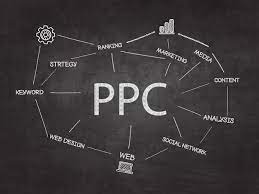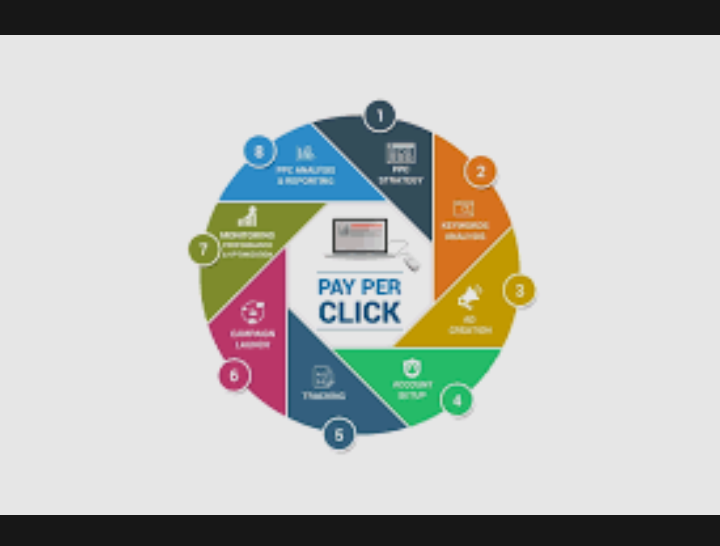Pay Per Click Advertising: What It Is And How It Works
- obianaele0
- Aug 18, 2023
- 5 min read
If you've ever encountered those captivating advertisements that appear adjacent to your search results on platforms such as Google and various other search engines, then you're already familiar with the concept of pay per click (PPC) advertising. The first search results in the image below serve as an apt example of PPC.
What is Pay-Per-Click Advertising?
Pay-Per-Click (PPC) advertising constitutes an online advertising model where advertisers make a payment each time a user clicks on one of their advertisements. This approach involves purchasing website visits instead of relying on organic means to acquire those visits. In this setup, advertisers participate in auctions for specific keywords or phrases pertinent to their target audience and industry. When a user conducts a search using these keywords, the search engine showcases applicable ads, generally at the top or bottom of the search results page. If the user clicks on the ad, the advertiser incurs a predetermined bid cost.
PPC advertising furnishes an exceptionally targeted strategy, presenting ads to users actively searching for products or services akin to what the advertiser provides. Prominent PPC platforms like Google Ads, Bing Ads, and various social media platforms offer comprehensive tools to manage and optimize campaigns, granting advertisers authority over their budget, the capability to target specific demographics, and the means to assess performance using diverse metrics.
This model proves beneficial for businesses as it facilitates direct access to their intended audience, facilitates measurement of campaign efficacy through data-driven analytics, and affords more effective control over advertising expenditure. With thorough keyword analysis, compelling advertisement content, and strategic bidding, PPC advertising can steer relevant traffic, nurture lead generation, and escalate conversions for businesses of all scales.
How PPC Works
Pay-Per-Click (PPC) advertising operates on a bid-centered system, where advertisers vie to display their ads to pertinent audiences. This progression involves several pivotal steps and relies on various factors to ascertain which ads are displayed and in what sequence. The subsequent paragraphs elaborate on the modus operandi of PPC advertising:
1. Advertiser Campaign Setup:
Advertisers commence by formulating a PPC campaign on a chosen platform, such as Google Ads or Bing Ads. They define the campaign's aims, target audience, geographic preferences, and budget.
2. Keyword Investigation and Selection:
Advertisers undertake keyword exploration to pinpoint the most fitting and valuable keywords linked to their products or services. These keywords mirror the search terms users might input while seeking something specific.
3. Advertisement Crafting:
Advertisers design and compose captivating ad content tailored to their selected keywords. This ad content should be engaging and pertinent to encourage users to click on the ad.
4. Bid Auction:
When a user triggers a search employing specific keywords, the search engine activates a bid auction to determine which ads are presented. The auction factors in multiple elements, including the advertiser's bid amount, ad quality, and anticipated click-through rate (CTR).
5. Ad Rank and Advertisement Placement:
The ad auction calculates an Ad Rank for each advertiser based on their bid and ad quality. The Ad Rank dictates the ad's placement on the search results page. It's calculated by multiplying the bid amount by the ad's Quality Score.
6. Quality Score:
The Quality Score holds significant importance in PPC advertising. It gauges how pertinent the ad is to the user's search query and the content of the landing page. A higher Quality Score can lead to improved ad placements and reduced costs.
7. Cost-Per-Click (CPC):
The advertiser remits a predetermined bid amount to the search engine solely when a user clicks on their ad. This is termed the Cost-Per-Click (CPC), and it can fluctuate based on competition and ad quality.
8. Ad Extensions:
Advertisers can heighten their ads with extensions, such as sitelinks, call extensions, or location extensions. These augmentations provide additional information and amplify the ad's visibility and user experience.
9. Click-Through Rate (CTR) and Conversion Tracking:
Advertisers supervise their campaigns to gauge performance. The Click-Through Rate (CTR) denotes the percentage of users who click on the ad after viewing it. Conversion tracking enables advertisers to track specific actions taken by users post-ad click, such as form submissions or purchases.
10. Ongoing Refinement:
PPC advertising demands perpetual enhancement for optimal results. Advertisers refine their keyword assortment, ad content, and bidding strategies to achieve improved outcomes and optimize return on investment (ROI).
In sum, PPC advertising embodies a dynamic and data-centric advertising model that empowers businesses to effectively access their target audience, manage their advertising budget, and gauge campaign success. By judiciously choosing keywords, crafting compelling ad content, and incessantly refining campaigns, advertisers can channel pertinent traffic to their websites and fulfill their marketing goals.
Prominent PPC Platforms
Major Pay-Per-Click (PPC) platforms represent robust advertising avenues offering businesses extensive outreach and the capacity to target precise demographics. Each platform boasts unique features, audience profiles, and ad layouts. Below is a synopsis of the principal PPC platforms:
1. Google Ads:
Google Ads, previously known as Google AdWords, ranks as the most prevalent and widely utilized PPC platform. It empowers advertisers to exhibit ads on Google's search engine results pages (SERPs), along with partner sites within the Google Display Network. Advertisers vie for keywords associated with their products or services, and their ads are triggered when users search for those keywords. Google Ads offers assorted ad formats, including text ads, responsive search ads, display ads, shopping ads, and video ads. The platform furnishes thorough targeting choices encompassing geography, demographics, and devices. Renowned for its expansive user base and widespread reach, Google Ads holds pivotal significance for businesses seeking heightened online visibility.
2. Microsoft Advertising (formerly Bing Ads):
Microsoft Advertising serves as the PPC platform for Microsoft's search engine, Bing, and its partner network encompassing Yahoo. Although its audience size is smaller than Google's, Microsoft Advertising still reaches millions of users. Advertisers can transfer their Google Ads campaigns to Microsoft Advertising, streamlining ad deployment on both platforms. The interface and functionalities resemble Google Ads, and it presents akin ad formats like text ads, shopping ads, and image ads.
3. Facebook Ads:
Facebook Ads constitutes a potent PPC platform, empowering advertisers to connect with a meticulously targeted audience across Facebook and its affiliated applications, including Instagram and Messenger. Advertisers can create diverse ad types, including image ads, video ads, carousel ads, and lead ads. Facebook's advanced targeting capabilities enable advertisers to pinpoint audiences based on demographics, interests, behaviors, and affiliations. This granular targeting potential renders it a formidable tool for businesses intent on reaching distinct customer segments.
4. Twitter Ads:
Twitter Ads extends sponsored tweets, promoted accounts, and promoted trends as its principal ad formats. Advertisers can target users according to interests, keywords, and demographics, as well as interact with users engaging with their tweets. Twitter Ads can be particularly potent for real-time marketing and involvement with trending topics.
5. LinkedIn Ads:
LinkedIn Ads is tailored for B2B (business-to-business) advertising, facilitating advertisers to target professionals according to job titles, industry, company size, and more. Sponsored content, sponsored InMail, and display ads constitute its ad formats. This platform proves ideal for businesses aiming to engage decision-makers and professionals within specific industries.
Each of these major PPC platforms proffers its own benefits and target audiences. Effectual PPC advertising hinges on comprehending your target market, defining clear campaign objectives, and leveraging the unique features and targeting capabilities of each platform to engage the right audience with compelling ad content






Comments